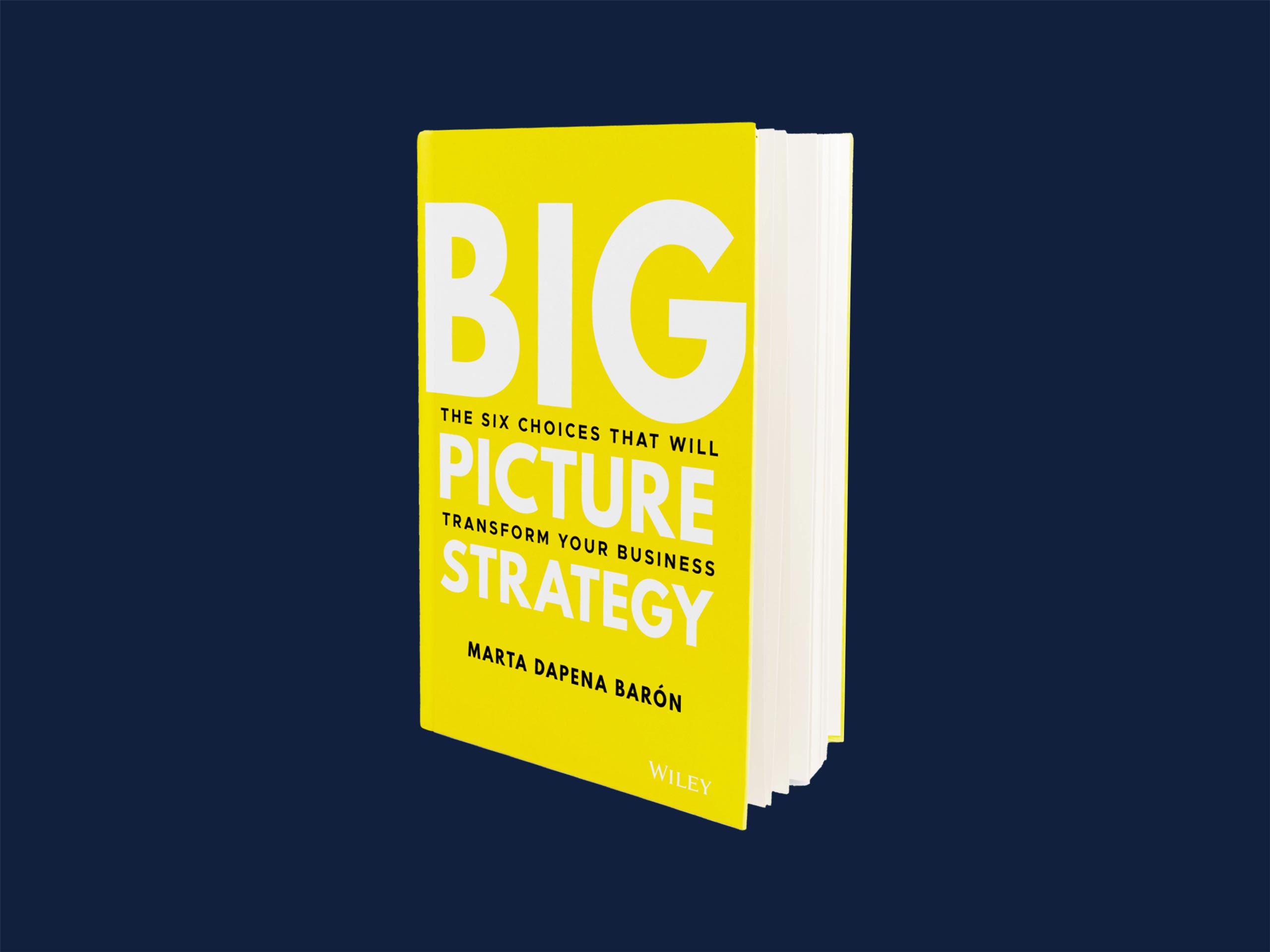Have you ever been part of a go-to-market strategy exercise? Did you find it challenging? Were you satisfied with the outcome? Developing go-to-market strategy is complex – it involves making choices considering lots of information, such as market trends, customers, competitors, suppliers, and the regulatory environment among others. Thankfully, the Big Picture Strategy approach helps you reduce complexity by focusing your team on the six foundational elements all go-to-market strategies must address: brand, business category, bodies, beliefs, behaviors, and benchmarks – the 6Bs.
Winning go-to-market plans consider six interdependent variables: a company’s brands, its business category, its target customers (the bodies), the belief and behavioral changes required to achieve business goals, and the metrics (benchmarks) required to drive organizational learning. These 6Bs work in a system, as illustrated in the figure here.

The 6Bs focuses your teams on the key questions any strategic narrative must address. Marketers today are awash with data and struggle to turn information into actionable insights. And yet, if your team can confidently answer the questions posed by each of the Bs, you will articulate who you are, who your customers are and how you plan to grow by creating value with them – these are the building blocks required to tell a compelling brand story.
Having a compelling brand story is critically important to align everyone in your organization around your plan. This is what market leaders do: they create learning capacity in their organizations through each successive strategy-to-execution cycle by aligning their strategies with their actual execution and measuring the outcomes. In the process, these companies create internal cultures and customer experiences that reflect the values espoused by their brands.
In other words, organizational learning requires alignment around one way to go to market, one overall goal and one value proposition communicated through all customer touchpoints. And although go-to-market execution is varied, in our research and work with clients, we have found just four types of go-to-market strategies.
Strategic choice is risky, and your commercial team can minimize that risk by “trying on” all four potential strategies prior to selecting one. The 6Bs help you estimate and visualize the opportunity and the major executional implications of strategic choice.
Here are the four go-to-market strategies:
1. Category development. This is the strategy a brand pursues when creating a category or expanding it by attracting new customers to the category and therefore the brand. It involves investing in category infrastructure and motivating adoption. Growth comes from expanding the business category by bringing in new customers.
2. Brand expansion. This is the strategy of a category leader – growth comes from focusing on current loyal customers and offering them more value in each interaction or through greater use of the brand. Executing on this strategy involves increasing the financial and emotional commitment customers have to the brand.
3. Brand commitment. This strategy is for brands whose best source of growth lies with multibrand customers: customers who use it only sometimes, as part of a brand set within the category. Executing on this strategy involves motivating those customers to increase commitment at the expense of another brand in the choice set.
4. Brand switching. This strategy is pursued by brands entering a category that has an established leader or segment. The entrants choose to compete according to the rules established by the category leader, rather than attempting to reframe the category. Entrants use all “executional elements” to motivate customers to switch brands, with a keen focus on the reason their brand would be preferred over the category leader.
The figure below aligns the 6Bs to each of the go-to-market strategies.
Summary of the Go-to-Market Strategies Using the 6Bs
Use the 6Bs to “try on” strategic scenarios for your company

Company Examples by Go-to-Market Strategy
You will find the four go-to-market archetypes across a variety of industries. The figure below illustrates just a few examples. Splenda and Tesla are examples of category development. Splenda created the low-calorie sweetener category while Tesla developed the luxury all-electric car category. Brand expansion strategies includes those of Dyson, in premium vacuums, and Arm & Hammer, in baking soda. Brand switching strategies include those of Outlook against Gmail and T-Mobile against Verizon. Brand commitment strategies include the streaming wars waged by companies like Disney & Netflix, and the decades-old competitive war between Duracell and Energizer over battery life.

You want to choose the strategy with the best return, given your budget and timeframe. How can you do this?
Selecting a go-to-market strategy is an iterative process requiring estimates of customer opportunity and cost. Use the 6Bs to estimate opportunity quickly, identifying the most likely values for each of the marketing variables by strategy (see the figure above). This will enable you to compare each strategic scenario by potential return on investment, including the number of potential customers available, the required belief and behavior changes, the potential for competitive reaction and the most likely financial outcomes. You can test critical assumptions through market research.
Sustainable growth comes from developing sound plans capable of aligning entire cross-functional teams toward single-minded goals. The Big Picture Strategy method breaks down complex choice into its most important variables yielding plans that are easy for others to understand and therefore execute.




